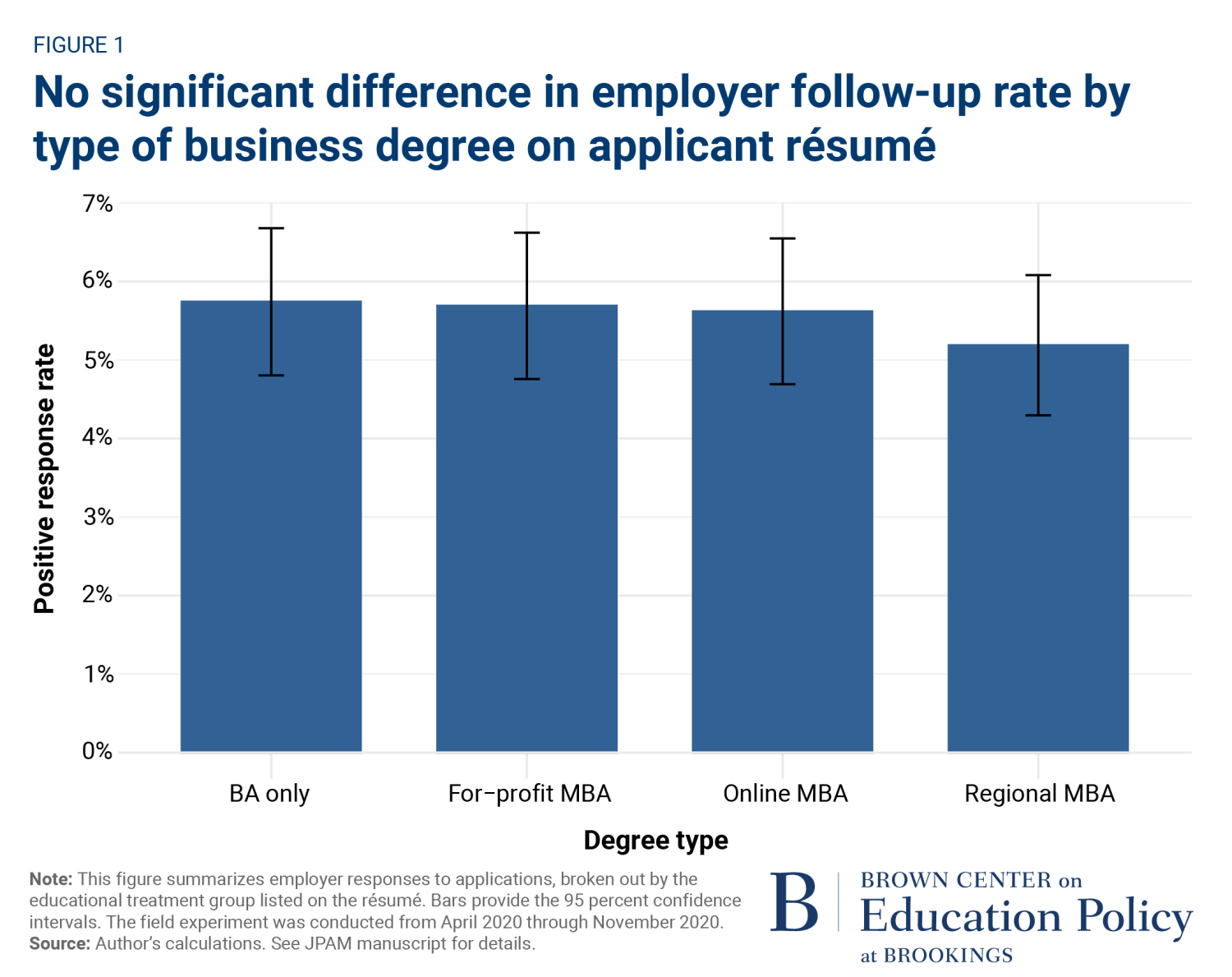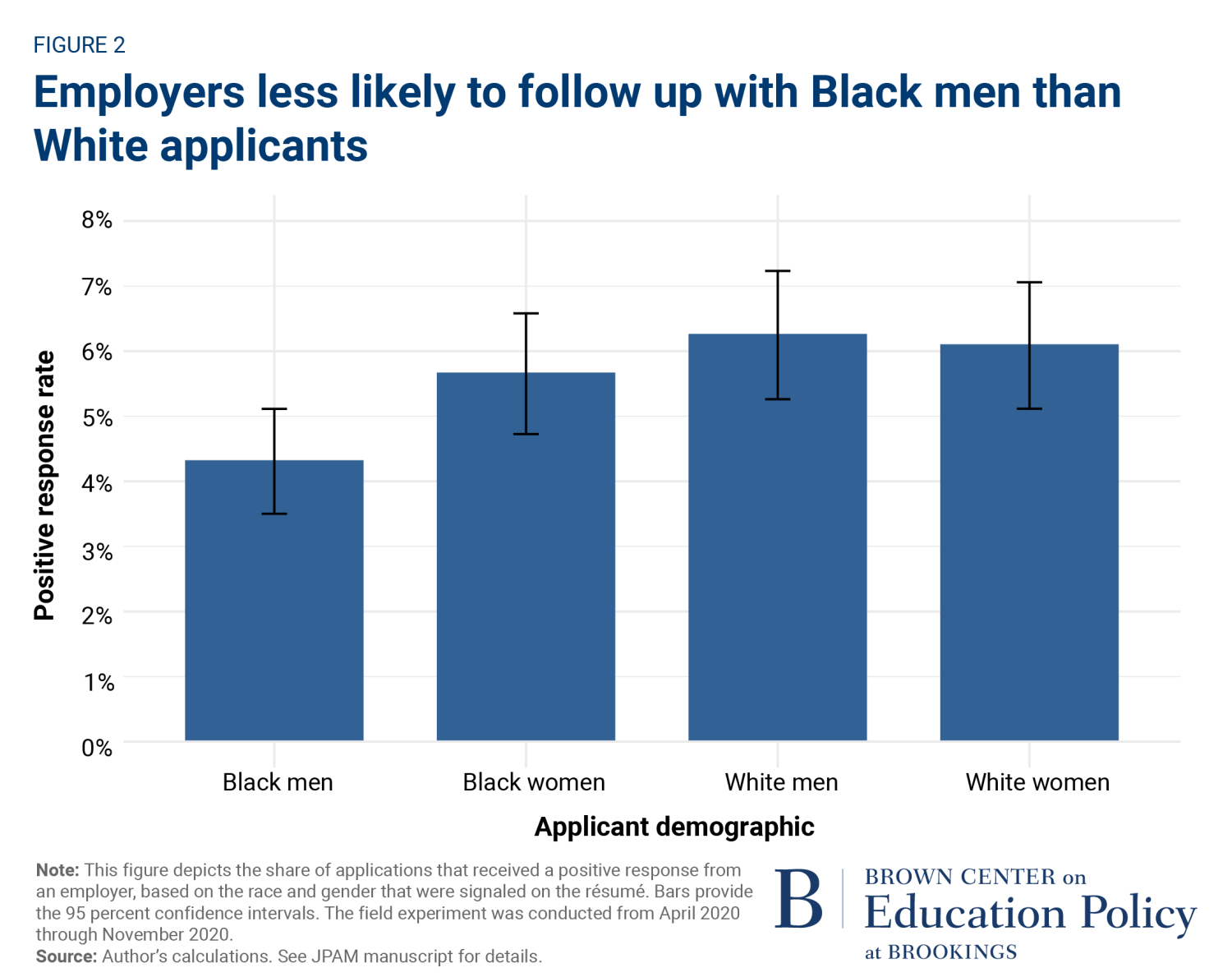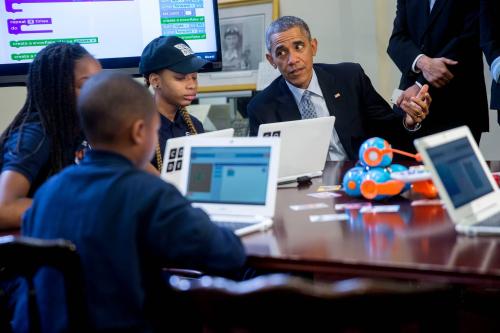During the past few decades, there has been substantial growth in graduate school enrollment. In fact, the number of people in the U.S. with a graduate degree doubled between 2000 and 2018.
With rising costs for attending graduate school and the ability to borrow Grad PLUS Loans up to their full cost of attendance (minus any other aid received), graduate students take out a disproportionate share of federal student loans. In 2017-18, for instance, just 19% of federal student loan borrowers were graduate students, but their loans for graduate school amounted to 40% of student debt issued that year.
The overwhelming majority of graduate students are pursuing master’s degrees, and there are now about two master’s degrees awarded for every five bachelor’s degrees. On average, borrowers take out over $55,000 for a master’s degree, roughly twice the amount borrowed for a bachelor’s degree. The scale and cost of master’s enrollment makes it especially important to understand the labor market returns to master’s degrees, which have long been heralded as the “new bachelor’s” degree.
“In 2017-18, for instance, just 19% of federal student loan borrowers were graduate students, but their loans for graduate school amounted to 40% of student debt issued that year.”
In an article recently published in the Journal of Policy Analysis and Management (JPAM), I examine how employers respond to job candidates with one of the most prominent master’s degrees: a Master of Business Administration (MBA). MBAs make up about one-fourth of master’s degrees awarded.
Using a field experiment to detect employer perceptions of job candidates with MBAs
Building on prior research at the undergraduate level, I conducted a field experiment to examine the extent to which employers differentiate between job candidates based on the type of institution where they earned their MBA (or if they did not receive an MBA at all). To do so, I created fictitious résumés that were designed to look authentic. I then used the résumés to apply to thousands of real job openings and tracked employer responses. By randomly assigning key information that was shown on the résumés, I was able to assess how employers respond to applicants who differ on those dimensions but are otherwise equivalent.
First, within each set of four applications submitted to a job opening, I randomly assigned the MBA institution type. I decided not to focus on business schools at institutions like Harvard and the University of Michigan, which tend to receive an outsize share of media attention but enroll a smaller share of MBA students. Instead, I chose to list MBAs from three types of broad-access institutions that collectively enroll the vast majority of MBA students: for-profit institutions, other primarily online institutions, and regional institutions. In addition to these three MBA treatment groups, one group (one-fourth of the applications) listed that the applicant had only earned a bachelor’s degree. In all cases, the applicant’s bachelor’s-granting institution was listed as a large, broad-access public university in a nearby state.
Second, based on longstanding evidence of racial discrimination in hiring, I also randomly varied the implied race and gender of the applicant. The names listed on the applications suggested the applicants were Black women, Black men, White women, or White men (for more details on the process used to select these names, see the full paper). For each job opening, all four applicants had names suggesting they were the same race and gender as one another.
Overall, I submitted 9,480 job applications to employers in 16 large U.S. metropolitan areas for a variety of management, marketing, and sales positions that required at least a bachelor’s degree. The experiment took place between April 2020 and November 2020, coinciding with the early months of the COVID-19 pandemic. During this tumultuous period, many applicants would likely expect an MBA credential to help them stand out in the labor market, and calls for racial equity were receiving widespread attention.
MBA recipients fared no better than applicants with only a bachelor’s degree
Applicants in the three MBA treatment groups (for-profit, online, and regional institutions) received positive responses from employers (e.g., interview callbacks) at essentially the same rate as one another. Further, as shown in Figure 1, the positive responses for applicants in the MBA treatment groups were not meaningfully different than those for applicants with only a bachelor’s degree. Thus, employers’ response rates did not differ across the treatment groups overall, despite the substantial time and cost required for an MBA. Even for job openings that listed a preference for candidates with master’s degrees, applicants in the MBA treatment groups did not receive meaningfully different rates of positive responses than applicants with just a bachelor’s degree.

Black men received 30% fewer positive responses than White applicants
The study also revealed that employers offered 30% fewer positive responses to applicants whose names suggested they were Black men than they did to presumably White applicants (see Figure 2). Since all other résumé elements were randomly assigned, no other applicant characteristics would explain these differential response rates by race and gender. Given that the study mainly occurred during the supposed racial reckoning of 2020, this finding offers stark evidence of ongoing racial discrimination at a time when many employers were publicly proclaiming a greater commitment to equity in their hiring practices.

Implications
These findings offer several key insights about the modern MBA landscape, which is increasingly comprised of online programs and other formats designed to meet the needs of working adults.
“First, for students expecting that an MBA from a broad-access institution will dramatically boost their likelihood of receiving positive responses from a new employer, these results offer reason for caution.”
First, for students expecting that an MBA from a broad-access institution will dramatically boost their likelihood of receiving positive responses from a new employer, these results offer reason for caution. Of course, many students pursue an MBA for other reasons not examined in this study, such as advancing in their career path at the current employer, and concerns about the affordability of, and economic returns to, master’s degrees are not unique to broad-access institutions. Further, it is important to remember that this experiment did not include hyperselective MBA programs or other types of master’s degrees, for which the outcomes may differ.
Second, these findings reinforce the importance of ensuring that graduate students are able to comfortably repay their student loans. Institutions and policymakers concerned about rising student debt will need to work to ensure that borrowing for these programs does not unduly burden students, a formidable challenge for the years ahead.
Finally, the results also reaffirm the persistence of racial discrimination in the labor market across a variety of industries and metropolitan areas. To adequately guard against racial discrimination, the U.S. Equal Employment Opportunity Commission (EEOC) may require additional investigative or enforcement mechanisms. Only by identifying and addressing the sources of disparate hiring outcomes—such as hiring managers’ evaluations of candidates, algorithmic bias, the use of information outside the application, and employers’ recruitment strategies—will it be possible to achieve racial/ethnic equity in hiring.



Commentary
What are the labor market returns to MBAs from broad-access institutions?
February 8, 2023